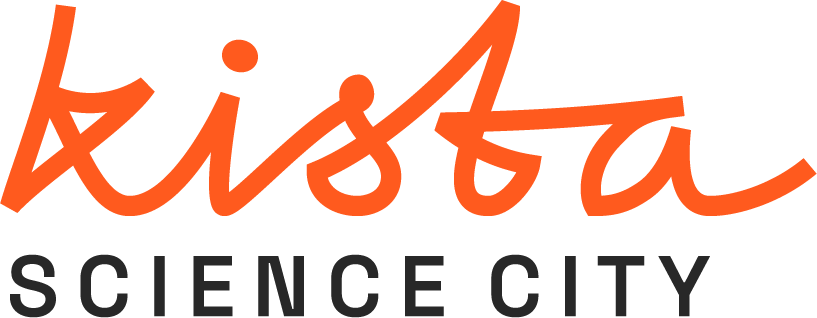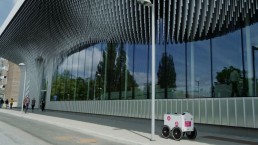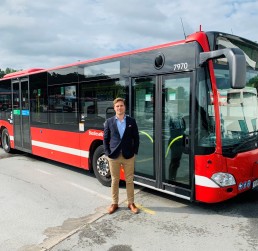Request for Interest cyber test and validation
New partners Flasheye and Bosch joins testbed for smart traffic systems
Flasheye and Bosch join Kista’s smart traffic systems testbed. These collaborations aim to enhance urban traffic management and safety by leveraging cutting-edge AI and 3D LiDAR technologies. Together with other testbed partners, these companies will help advance the development of intelligent solutions and progress toward smarter and safer cities.
The testbed
The smart traffic systems testbed offers a unique environment for evaluating and advancing innovative traffic management solutions. Here, companies of various sizes, from all across Sweden and beyond, can test and refine their technologies in a real-world urban environment. The site is fully equipped with essential power and high-speed communication infrastructure, ensuring smooth operations and fostering collaboration among various stakeholders, including the City of Stockholm. It also has a structured process and framework to ensure compliance with data privacy regulations when deploying and testing multi-sensor equipment within the designated urban area.
Flasheye
Flasheye is on a mission to make cities safer with their project, “3D Detection for Safer Cities and Roads.” Utilizing advanced 3D LiDAR technology, they gather real-time data from urban traffic environments. Their high-resolution sensors create a digital representation of the environment, focusing on shapes and movements while safeguarding privacy by only capturing silhouettes and shapes.
“By monitoring traffic flow, identifying objects like slow or stationary vehicles, speeding cars, pedestrians, and cyclists, we can collect valuable data on size, speed, and more,” says Ida Rehnström, Deputy CEO at Flasheye. “This data is crucial for developing solutions that prevent accidents and optimize traffic management in urban environments. By participating in the testbed, we hope to gain valuable experience and contribute to creating a certified solution for smart cities.”
Bosch
Bosch brings their state-of-the-art AI-camera technology to the testbed, offering real-time detection of vehicles and pedestrians. Their edge-based system processes data on-site, reducing reliance on cloud infrastructure and enhancing data privacy. With a focus on real-world conditions, Bosch aims to refine their algorithms for optimal performance. Their proactive engagement with regulatory bodies like The Swedish authority for privacy protection (IMY) ensures their solutions meet the highest privacy standards.
“The testbed provides a unique environment for collaboration,” says Anders Karlsson, PMM, CCTV at Bosch Security Systems. “By working alongside other leading companies, we can establish strategic partnerships, expand our industry network, and ultimately drive progress in integrating our technology seamlessly into existing urban infrastructure. We have already established several short-term collaborations within the testbed”
The future
Looking ahead, Flasheye’s and Bosch’s systems will help enhance urban management, setting new benchmarks for safety and efficiency. As these technologies evolve and integrate, they will contribute to a more responsive and adaptive city infrastructure, ultimately improving the quality of life for residents and supporting sustainable urban growth. Moreover, the collaboration between Flasheye, Bosch, and other partners in the testbed creates a strong ecosystem of knowledge and technologies.
Curious about our smart traffic systems testbed and how you can get involved? Reach out to explore partnership opportunities, discuss your goals, and learn how our testbed can help you achieve them. Contact Lucas Uhlen.
Insights from our cybersecurity course
SMEs and digital threats
In today’s digital age, cyber threats are a constant concern for businesses of all sizes. However, small and medium-sized enterprises (SMEs) can be particularly vulnerable. A recent report by the European DIGITAL SME Alliance found a 57% increase in cyberattacks across Europe, with many targeting smaller firms that may lack both advanced security measures and expertise.
This is where the recently concluded “Basic Cybersecurity” course aimed to make a difference. Offered as part of Sweden Secure Tech Hub, the course empowered participants with the knowledge and skills to navigate the evolving cybersecurity landscape. Throughout the spring, attendees gained a comprehensive understanding of core concepts through workshops, self-study modules, and practical exercises. This included threat identification, security measures, and risk management strategies, helping participants to develop effective defenses for their businesses.
The Cybersecurity course was led by deputy professor of Linköping University, Mikael Asplund, and Sakarias Strand of Kista Science City. Sakarias reflected on the course’s impact and the enthusiasm he saw among participants.
“Participants showed a great eagerness to learn and engaged actively in discussions and exercises. Many of them, who did not primarily work with cybersecurity, were able to connect theoretical knowledge to real-world situations. This demonstrates the vital role of cybersecurity training for SMEs, as it links awareness and practice. As cyber risks continue to grow, educational initiatives like this one will be increasingly important in building resilient and secure business environments.”

Reflections from participants
Sadhana Pettersson, Sales Manager at Bouvet, and Jennyca Imner Nicolau, Business support specialist at Abbott Medical are two of the participants. We spoke to them about their experiences and insights gained during the spring.
What motivated you to participate?
Sadhana: “In the IT sector, there’s often a general lack of cybersecurity awareness. When working with clients in consulting services, it can be challenging to navigate situations where the understanding level is lower. This course seemed like a perfect opportunity to bridge that gap.”
Jennyca: “I wanted more insight into cybersecurity in general, but also saw an opportunity to meet others and hear about their needs and challenges. The fact that the course included in-person sessions and offered university credits made it particularly appealing to me.”
How did the course impact your understanding of cybersecurity?
Sadhana: “I think that it provided a deeper understanding of cybersecurity’s complexity. It opened my eyes to how it’s not just an IT issue, but a business concern as well.”
Jennyca: “The course provided tools to identify weak links in process chains, which I can apply in upcoming projects. I now realize that everyone has a responsibility to protect their organization from cyberattacks.”
Was there a particular activity or discussion that stood out to you?
Sadhana: “The threat modeling exercise was very engaging. Although it was a new concept for me, it was incredibly valuable. Learning how threat modeling can be combined with risk analysis provided a powerful tool that I can definitely utilize in the future.”
Jennyca: “The small group discussions were particularly interesting to me. Hearing about other people’s experiences added a lot of value beyond the lectures. Also, reviewing materials before the lectures made the sessions smoother, allowing us to quickly dive into these group discussions. Sakarias was an excellent moderator, guiding discussions in an inclusive and easy-going manner, which was crucial given the varied levels of knowledge among participants.”
Sweden Secure Tech
Sweden Secure Tech Hub is a national collaboration between six of Sweden’s leading science parks focused on enhancing cybersecurity for small and medium-sized enterprises (SMEs). The hub provides a variety of resources, including educational courses and support for developing secure digital products. By participating in the hub’s programs, businesses can access the latest cybersecurity knowledge and tools, helping them to protect their digital assets and comply with international standards.
For more information and to sign up for upcoming courses, reach out to sakarias.strand@kista.com.
Drones – a natural layer in the future transport system
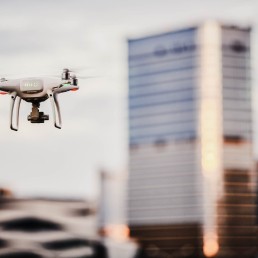
Drones
Drones – a natural layer in the future transport system
What impact will the new U-space regulations, Sustainable Urban Mobility Planning and UAMs have on Swedish authorities and entities? This topic was discussed at an event earlier this year, part of the test and demo activities in Fordonsdalen.
A broad range of stakeholders from the City of Stockholm, Region Stockholm, Luftfartsverket, Ericsson and several Stockholm based small and middle sized enterprises (SME) gathered to discuss and demonstrate the role drones will have in our future cities.
Raising awareness on how to drive a sustainable and responsible transition of urban mobility
The purpose of the meeting was to raise awareness on how to drive a sustainable and responsible transition of urban mobility into space, or the third dimension.
A vital part of the event was the discussion on how municipalities should implement the new upcoming U-space regulations, and the role of innovative SME’s in this process, showcasing safe use cases, eg data collection and inspection of first and last mile deliveries. In order to to shape the future of mobility we must have a common understanding from all parties, authorities, municipalities, researchers and startups.
Three small-sized innovative companies had the opportunity to present their solutions during the meeting;
–Skyqraft – visual data analytics provider helping businesses in the linear infrastructure sector to make better decisions about grids,
–Skysense, experts in the area of tracking aircraft, the growing field of aircraft safety and protection against drone;
–Aerit – a sustainable drone delivery service based in Stockholm.
“Unmanned aerial vehicles, or more commonly, drones, are already in use in our society for different purposes such as data collection and infrastructure inspections. The possibilities of using drones in the urban environment are endless. To establish a good balance of what use cases the citizens need and the the ones that will have the most impact in terms of environmental and social sustainability, the collaboration between the public and private sector is key.”
— Sara Nozkova, Mobility Lead at Kista Science City and project manager for the Test & Demo activities within Fordonsdalen.
Call for action
Are you too a Stockholm-based SME developing solutions with the potential to transform the automotive industry and transportation system? Would you like to demonstrate your solution to a wider audience, or test together with a potential business partner within the ICT or automotive sector? Please contact sara.nozkova@kista.com.
Sign up to get the latest news, updates and insights from Kista Science City
Urban robots and shared micro mobility
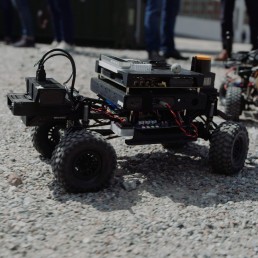
Autonomous vehicles
Urban robots and shared micro mobility
Test & demo activities for Fordonsdalen took off with full speed this earlier this year!
At a demonstration day in June, part of Kista Mobility day 22, smaller growth companies with solutions for autonomous robots and smart city infrastructure were invited to put their innovations on display for a wide audience of decision makers, researchers, public sector representatives and potential business partners in the automotive and ICT industries.
The attendees could dive into cutting-edge solutions aiming to increase the pace of transition, strengthen the innovation power and business development for the city’s mobility systems.
“AI-powered autonomous robots are reshaping urban spaces and city life already today. Cities are at the center of the technological changes fueled by the fourth industrial revolution such as automation and artificial intelligence. We see a rapid development of a range of technologies addressing urban challenges.”
–says Sara Nozkova, Mobility Lead at Kista Science City and project manager for the Test & Demo activities within Fordonsdalen.
The companies demonstrating their solutions in Kista, eg ABConnect and Teraki, showcased how autonomous robots can be integrated into the urban landscape to provide smarter and more sustainable, and effective solutions in many areas, such as last-mile goods delivery, and security tasks.
Collaboration is key
New tech solutions is not all. New solutions for smart infrastructure are needed in order to complement the new first and last mile solutions. Nektta and Livelo are two great example of Stockholm-based companies developing new ways to support people getting around the city in a sustainable way, and to re-think the concepts of shared micromobility. Shared micromobility is an innovative sustainable mode of transport that can replace short-distance travel and has the potential to provide many environmental benefits.
Call for action
Are you too a Stockholm-based small or middle-sized company developing solutions with the potential to transform the automotive industry and transportation system? Would you like to demonstrate your solution to a wider audience, or test together with a potential business partner within the ICT or automotive sector? Do not hesitate to send an e-mail to lucas@uhlen@kista.com
Measuring traffic and people flows in Kista and Sollentuna
In Stockholm, car commuters may be forced to spend the equivalent of 16 days in traffic queues for one year. Public transport buses are also heavily affected by congestion and queues.
The objective of the Spatial Modelling Analytics & Real-time Tracking (SMART) Mobility Project is to mitigate growing urban traffic congestion challenges and associated issues of environmental degradation, economic inefficiency and negative impacts to the quality of life of citizens.
SMART started in December 2020 and is now moving from inventory and analysis phase to IRL measurements, in traffic.
As we begin the first measurement period – where we take traffic from Ekerö to Kista and Sollentuna – we are taking the next exciting step in the SMART project. Among other things, we will take a closer look at travel on the bus routes that the transport contractor Arriva runs for Stockholm Public Transport:s (SL) – lines 176, 177 and 179 – where special units will be set up to see passenger flows. During that period, June-September, we will gain valuable insights into what travel to and from Kista and Sollentuna looks like from different areas of Stockholm, what travel patterns look like, etc., so that we can plan and perform public transport in a good way.
Petter Johansson, Business development manager, Arriva (picture above):
”Arriva sees a great value of understanding our customers travel patterns to be able to create a more attractive public transportation with an optimized timetable. In the SMART project, many different actors contribute with their respective data sources, which enables data-driven improvements to optimize traffic planning and accessibility. Through the SMART project, Arriva sees opportunities to optimize and streamline public transportation with customer needs in focus.”
SMART is an initiative to create a database of comprehensive information about all travelers’ movements, to plan and optimize public transport. The project will use data from many different sources, including wifi data from Bumbee Labs, vehicle data from Ramboll, Inrix and Tomtom and crowd data from Tre. The unique thing about SMART is that it makes data about how passengers move even in forms of travel other than the collective ones available.
